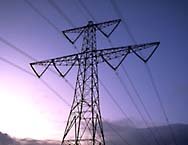Capacity resource planning involves the integration of “supply-side” planning and “demand-side” planning. “Supply-side” planning involves the determination of “least-cost” generation (including purchases), transmission and distribution equipment to serve the customer load requirements. “Demand-side” planning involves the determination of cost-effective programs to manage customer load demands and achieve “least-cost” system operation. This workshop, and consequently, these comments, are focused on the generation side of planning.
The optimal mix of capacity additions is dependent on many factors. Among these factors are: existing generation capacity composition; fuel cost and availability; operation and maintenance (“O&M”) costs; plant costs; cost and types of power purchases; technology availability; target reliability/reserve level; load-demand profile; load growth projections; load management options; environmental and regulatory requirements; and economic parameters, including financial forecasts and fixed-charge and present-worth rates.
Specific capacity addition plans are dependent on the above forecast parameters. Unfortunately, the forecast of these parameters is subject to uncertainty. Each has a likelihood of assuming a range of values in the future. A plan that is “least-cost” under a reference set of forecast parameters may not be so under an alternative set of forecast parameters. A key objective in planning is to recognize these uncertainties and to develop a plan that can be adapted to changing business conditions and be robust under a range of forecast parameters.
Planning under uncertainty is a dynamic, on going process. Reliability is a key input in generation planning. Typically, utilities have used one or more of several methods to determine how much generation capacity is required to serve the projected load demand. One such method is the percent generation reserve margin approach. Under this approach, the percent reserve evaluation computes the generation capacity exceeding annual (projected) peak load. This is calculated by comparing the total installed generating capacity at peak with the projected peak load. Historically, reserve margins in the range of 15% to 25% have been determined to be required.
A second method is the loss-of-the-largest-generating-unit method. This method reflects the effect of unit size on reserve requirements. With the loss-of-the-largest-unit method, the required reserve margin is calculated by adding the size of the largest unit divided by the peak load to a constant reserve value. This approach begins to explicitly recognize the impact of a single outage, that is, loss of the largest generating unit.
A third, probabilistic approach to determining required reserves is a “loss-of-load-probability (“LOLP”) analysis. This analysis looks at the expected value of the number of days per year of capacity deficiency. Under the LOLP method, the load-carrying capability of a unit is based on the forced outage rate of the generating unit and the planned outage rate, as well as other characteristics of other units in the system. Using an LOLP analysis, generation system planners can evaluate generation system reliability and determine how much capacity is required to obtain a specified level of LOLP.
Some utilities take the LOLP analysis a step farther, and calculate the LOLP for every hour of the year, rather than for 365 daily peak loads. The resulting measure is generally expressed in hours/year of expected capacity deficiency (“loss of load hours” or “LOLH”). The LOLH method permits the reliability index to be sensitive to changes in daily load profiles due to evolving load profile changes or load management control. The hourly measure also permits the reliability index to be sensitive to alternative designs of energy-limited generating units and units where hourly output is not constant.

No comments:
Post a Comment